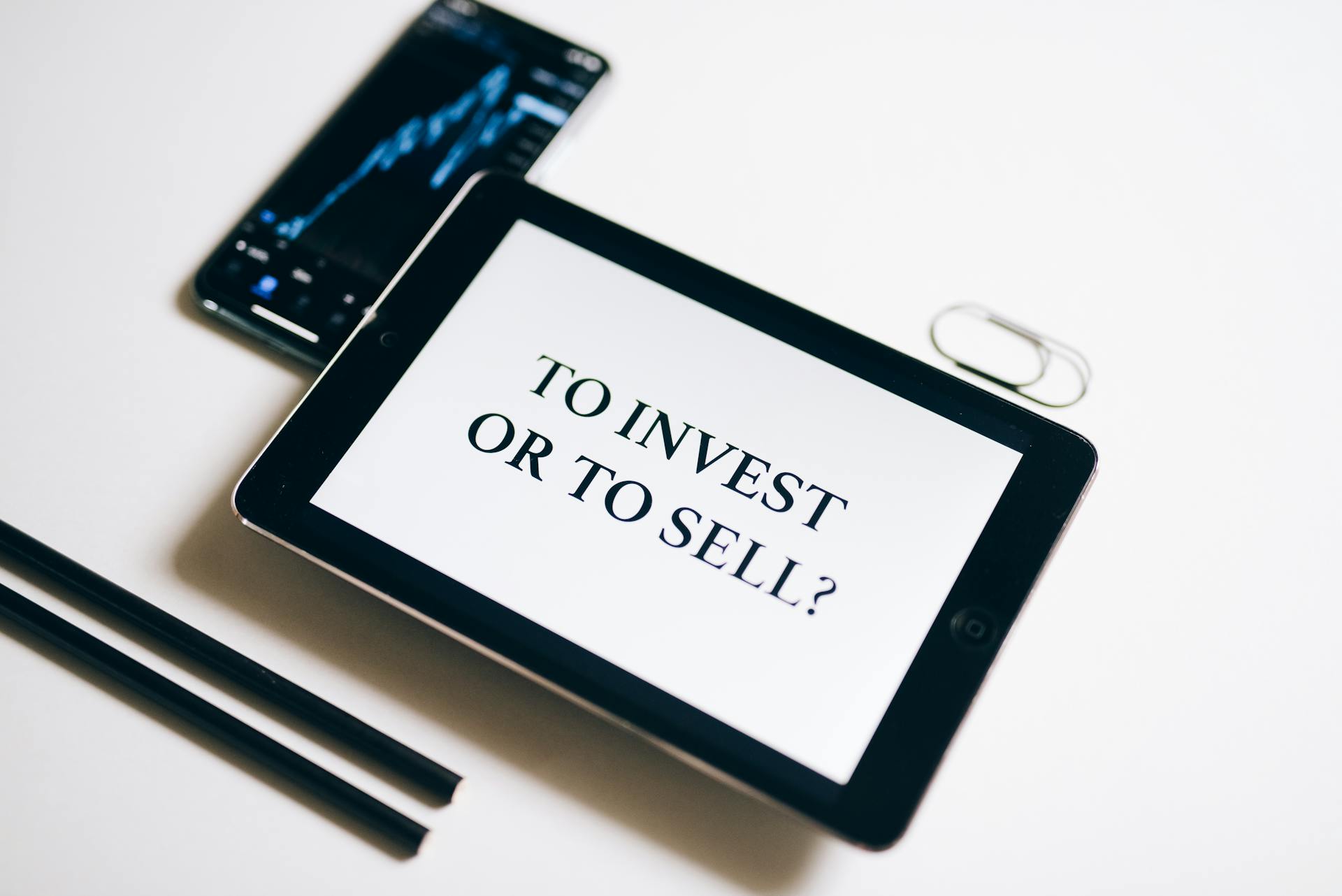
Getting started with impact investing can seem daunting, but it's easier than you think. First, define your goals - are you looking to make a positive social or environmental impact, or generate strong financial returns? Consider your risk tolerance and investment horizon.
Most impact investors start by allocating a small portion of their portfolio to impact investments, often 5-10%. This allows you to test the waters and see how it affects your overall portfolio performance.
Why It Matters
Impact investing matters because it challenges the traditional view that social and environmental issues can only be addressed through philanthropic donations. It offers a new way for investors to advance social and environmental solutions while generating financial returns.
The impact investing market is growing, and many types of investors are entering it. Banks, pension funds, financial advisors, and wealth managers can provide investment opportunities to individuals and institutions interested in social and environmental causes. Institutional and family foundations can leverage their significant assets to advance their core goals while maintaining or growing their endowment. Government investors and development finance institutions can provide proof of financial viability for private-sector investors while targeting specific social and environmental goals.
Check this out: Social Investing
Impact investing provides a tool for achieving social good with a wider array of assets than traditional philanthropy. Private foundations in the U.S. can achieve social good not only with their 5% required annual payout but also with the 95% endowment corpus that remains invested.
Here are some key statistics that illustrate the potential of impact investing:
- U.S. foundations make annual grants totaling $60 billion.
- U.S. foundations hold assets totaling $865 billion.
By investing in impact, you can join a growing community of investors working towards a more sustainable and equitable future.
Understanding Impact Investing
Impact investing is a way to make a positive difference in the world by investing in companies that prioritize social and environmental responsibility. It was first coined in 2007 by the Rockefeller Foundation.
Investors who use impact investing consider a company's commitment to corporate social responsibility, which means they think about how a company's actions affect society as a whole. This can include things like giving back to the community or investing in sustainable energy practices.
The type of impact created can vary depending on the industry and company, but some common examples include helping the less fortunate or investing in clean technology to benefit the environment.
Understanding
The term impact investing was first coined in 2007 by the Rockefeller Foundation. It's a way to reduce the negative effects of business activity on the social or physical environment.
Impact investing actively seeks to create positive social and environmental outcomes. This can be done through investments in nonprofits that benefit the community or in clean technology enterprises that benefit the environment.
Institutional investors like hedge funds, private foundations, banks, and pension funds are the bulk of impact investing. They're not the only ones, though - socially conscious financial service companies, web-based investment platforms, and investor networks offer individuals an opportunity to participate as well.
Impact investing may be considered an extension of philanthropy. It's a way for investors to make a positive difference in the world while still earning a return on their investment.
The type of impact created by impact investing can vary based on the industry and the specific company within that industry. Some common examples include giving back to the community by helping the less fortunate or investing in sustainable energy practices to help save our planet.
Investors who use an impact investing strategy first consider a company's commitment to corporate social responsibility (CSR) or the sense of duty to positively serve society as a whole. They base their decisions to become involved with a company based on this information.
Impact investing is not the same as socially responsible investing (SRI), although SRI may be a type of impact investing. SRI goes a step further by eliminating or selecting investments according to specific ethical guidelines.
Investee Structure
In the world of impact investing, a new kind of corporate structure is emerging that blends the best of for-profit and nonprofit models. This is known as the hybrid corporate form.
A company can now prioritize public benefit over financial performance, which is a significant shift from traditional business models. This is made possible by legislation such as the "benefit corporation" law, which has been enacted in 33 states since B Lab began its work in 2006.
For-profit companies are no longer limited to solely focusing on profits, they can now integrate social good into their business models. This is seen in the over 2,000 organizations in over 50 countries that have been vetted to account for their social purpose.
The B Corporation designation is a non-legal label that companies can use to signal their commitment to social purpose, but it's not a substitute for the legal protections offered by benefit corporation status.
Types of Impact Investments
You can invest in a variety of mission-driven organizations that align with your values and goals. One option is to invest in IFC's Asset Management Company (AMC) funds, which have raised $10 billion across 13 funds since 2009.
There are also opportunities for co-investments, especially in technology investments, and syndications. Additionally, you can participate in IFC's Managed Co-Lending Portfolio Program (MCPP), which allows institutional investors to passively participate in IFC's future loan portfolio.
Consider reading: Gold Star Investments
Here are some examples of mission-related investments (MRIs) that you can consider:
- Loans to mission-aligned non-profit organizations, such as charter schools, hospitals, or research centers
- Investments in for-profit social impact companies
- Socially responsible fixed income (bond) funds
- Impact-oriented private equity funds
- Public equity portfolios (stocks)
You can also consider investing in IFC bonds, such as green bonds and social bonds, which can help support sustainable development and social impact.
What Are Investments?
Impact investments can be made in both emerging and developed markets.
Investors can target a range of returns from below market to market rate, depending on their strategic goals.
Impact investments provide capital to address the world's most pressing challenges in sectors such as sustainable agriculture, renewable energy, conservation, microfinance, and affordable and accessible basic services.
These services include housing, healthcare, and education.
Recommended read: Wealthfront Investments
Types of Investments
Impact investments come in many forms of capital and investment vehicles. They provide investors with a range of possibilities when it comes to returns like any other type of investment class.
One way to invest in impact is through mission-related investments (MRIs), which are investments made into mission-driven organizations that are expected to generate market-rate financial returns. MRIs are designed to have both a positive social impact and contribute to the endowment's long-term financial stability and growth.
On a similar theme: A16z Investments
IFC's Asset Management Company (AMC) offers investments in IFC equities and debt, raising $10 billion across 13 funds since 2009. This is a significant opportunity for investors looking to make an impact.
Impact investing organizations and funds also make equity investments like traditional private equity and venture capital funds, but with a developmental impact. According to a 2021 study by the Wharton School of the University of Pennsylvania, venture capital has been dominating the impact investment space.
Here are some types of investments that offer both financial returns and positive social impact:
- Equity co-investments, especially in technology investments
- Syndications
- MCPP: IFC’s Managed Co-Lending Portfolio Program (MCPP)
- IFC bonds: Green bonds and Social bonds
These investments provide a range of possibilities for investors looking to make an impact. By considering these options, investors can align their investments with their values and contribute to positive social change.
Exchange-Traded Funds
Exchange-Traded Funds are a type of investment that allows you to track a specific index or sector, such as environmental, social, and governance (ESG) criteria.
The SPDR Gender Diversity ETF from State Street is one example of an Exchange-Traded Fund that is publicly traded and available to anyone with a stock brokerage account.
You can also consider MSCI's 11 environmental, social and governance index ETFs, which include popular low-carbon and sustainability indexes.
These ETFs offer a convenient way to invest in a diversified portfolio of companies that align with your values and investment goals.
Check this out: Index Investing
Digital Microfinance Platforms
Digital microfinance platforms have emerged as a way for individuals to invest in small-scale businesses, often in developing countries. MyC4, founded in 2006, allowed retail investors to loan to small businesses in African countries via local intermediaries.
These platforms offer lower-cost investing services compared to traditional equity deals. Microplace was an early United States provider of such services, which ceased taking on new loans in 2014.
MyC4's service permanently closed in 2019, but it's worth noting that even when they were active, results "haven't scaled to the widespread social impact we aspire to achieve" according to Microplace, which also struggled to achieve its goals.
Here's an interesting read: Top-rated Impact Investing Platforms
Investment Structure and Performance
Impact investors have diverse financial return expectations, with some seeking below-market-rate returns and others aiming for market-competitive and market-beating returns.
Most investors surveyed in the GIIN's 2023 Annual Impact Investor Survey pursue competitive, market-rate returns.
Portfolio performance overwhelmingly meets or exceeds investor expectations for both social and/or environmental impact and financial return.
Investment Structure
Impact investments can take various forms, and one key aspect is the investment structure itself. Private debt is the most common investment structure, according to the 2017 GIIN Annual Survey.
Investors have the option to incorporate different types of assets into their investment structure, including cash, public and private debt, equity, real assets, and even innovative instruments like pay-for-success contracts.
The Bill and Melinda Gates Foundation uses below-market rate investments, known as Program Related Investments (PRIs), to achieve specific program objectives and scale social enterprises that serve the poor.
In addition to PRIs, Mission Related Investments (MRIs) are also used, which are risk-adjusted, market-rate investments that have a positive social impact and contribute to the foundation's long-term financial stability and growth.
Private foundations can use MRIs and PRIs as part of their endowment, and PRIs have a legal definition in the U.S. that counts as a qualified distribution towards a foundation's 5% annual payout requirement.
Investor Structure
In the past decade, traditional philanthropic structures have given way to more innovative approaches. The last 10 years have seen a shift towards more flexible and impactful models.
Laurene Powell Jobs was an early adopter of the LLC as her primary vehicle in running the Emerson Collective. This structure allowed her to achieve her philanthropic goals more effectively.
The Chan Zuckerberg Initiative has taken it a step further by implementing a combination of LLC, DAF, private foundation, and 501(c)(4) structures. This approach has enabled them to maximize impact and flexibility, even forgoing tax benefits.
RPA's guide Operating for Impact can be a helpful resource for those looking to structure their philanthropy in a similar way.
Investment Performance
Impact investors have diverse financial return expectations, with some aiming for below-market-rate returns and others seeking market-beating returns.
Most investors surveyed in the GIIN's 2023 Annual Impact Investor Survey pursue competitive, market-rate returns.
Portfolio performance overwhelmingly meets or exceeds investor expectations for both social and/or environmental impact and financial return.
Business model execution and management is the most often cited contributor to risk in impact investing portfolios.
Impact investors are applying a multi-dimensional approach to decision-making, considering impact objectives and impact risks alongside traditional factors.
This dynamic approach highlights growing maturation within the industry as impact investors become more sophisticated in their approaches to performance management and capital allocation.
Leading impact investors, such as Anthos Fund & Asset Management, IDP Foundation, Inc., and UBS Global Wealth Management, exercise this dynamic approach to assess how they can most efficiently achieve their optimal impact and financial performance.
Here are some key findings on financial performance from the GIIN's 2020 Annual Impact Investor Survey:
The report also confirms earlier findings around the financial performance of private debt, private equity, and real assets, and expands on this research to focus on various facets of impact investment performance, including risk, financial return, and impact.
For another approach, see: Impact Investing Private Equity
Benefits and Challenges
Impact investing offers a range of benefits that make it an attractive option for those looking to make a positive difference.
By reinvesting returns, you can create philanthropic leverage that's unattainable through traditional grantmaking.
Foundations can use impact investing to leverage more of their assets for social or environmental change, rather than just dispersing 5% of their assets each year.
Impact investing allows investors to align their investments with their philanthropic values, avoiding the awkward situation of holding public ownership in companies that conflict with their grantmaking strategy.
Investors can reinvest the same money in a series of socially beneficial projects or organizations, creating a cycle of positive change.
Recommended read: Climate Change Impact Investing
Philanthropy and Financial Goals
Impact investing can be a powerful tool for achieving both financial and philanthropic goals. By merging investment and impact efforts, you can streamline your strategy and achieve returns while making a positive social impact.
Strong environmental, social, and governance (ESG) practices are often associated with financial outperformance, which can help you meet your financial goals. This is because many social good projects that prioritize ESG practices tend to perform better over time.
On a similar theme: Esg and Impact Investing
Impact investing allows you to leverage philanthropic dollars in a more efficient way. Investment returns can be reused over and over again to compound the impact, creating a snowball effect that can make a significant difference.
Donors who use impact investing report great satisfaction after incorporating it into their philanthropic strategy. Many report that it has breathed new life into their approach to social change, enabling them to test innovative ways to achieve a financial return while seeking impact.
Here are some key benefits of impact investing for philanthropy and financial goals:
- Strong ESG practices can lead to financial outperformance.
- Impact investing allows for the reuse of investment returns to compound the impact.
- Donors can use impact investing to test innovative approaches and breathe new life into their philanthropic strategy.
Industry and Institutional Investors
The impact investing industry has grown rapidly over the past decade, with a 2009 report estimating it could reach $500 billion in assets by 2020. This is a significant increase from the $50 billion in assets it had at the time.
Many organizations are now involved in impact investing, including development finance institutions like the British Commonwealth Development Corporation and Norwegian Norfund, which allocate a portion of their portfolio to investments that deliver both financial and social or environmental benefits.
The impact investing market is still relatively small compared to the global equity market, which is estimated at $61 trillion by the World Bank. However, it's growing, with impact investors managing $114 billion in impact investing assets as of 2015.
What Is a Firm?
A firm, in the context of industry and institutional investors, is essentially an investment fund that seeks to make a positive impact on society or the environment alongside generating financial returns.
An impact-investing firm, for instance, specifically aims to support beneficial social or environmental outcomes.
These firms often invest in causes they believe will generate strong returns, making profits a primary consideration.
Others, however, consider profits to be a secondary consideration, prioritizing the positive impact they can make.
The Market
The impact investing market has reached a significant milestone, with the GIIN estimating its size at $1.164 trillion USD, marking the first time it has topped the $1 trillion USD mark.
This growth is a testament to the increasing recognition of the importance of impact investing, which has been gaining momentum in recent years.
The GIIN's 2022 report highlights the emergence of green bonds and corporate impact investing as prevalent areas of development in the market.
These trends suggest that investors are becoming more sophisticated in their approach to impact investing, seeking to balance financial returns with positive social and environmental outcomes.
The market is still relatively new, but investors are optimistic about its future growth and development, expecting increased scale and efficiency.
Impact investors generally recognize broad progress across key indicators of market growth, but acknowledge that some challenges remain.
A unique perspective: Growth Investing Meaning
Industry
The impact investing industry has grown rapidly over the past decade, with a 2009 report estimating it could reach $500 billion in assets within a decade.
Industry leaders like Impax Asset Management Group, Sarasin and Partners, and Triodos Investment Management have been at the forefront of this growth, specializing in environmental and sustainability-focused investments.
These organizations are not just limited to traditional philanthropic models, but instead aim to generate both financial returns and positive social or environmental impact.
As of 2015, impact investors managed $114 billion in impact investing assets, a significant figure that highlights the growing size of this market.
The largest sectors by asset allocation were microfinance, energy, housing, and financial services, demonstrating the diverse range of investment opportunities available.
Many development finance institutions, such as the British Commonwealth Development Corporation or Norwegian Norfund, also engage in impact investing by allocating a portion of their portfolio to socially or environmentally responsible investments.
India is emerging as a major geography for impact investors, with over $1.1 billion already invested as of 2016, according to McKinsey.
Institutional Investors
Institutional investors have been increasingly drawn to impact investing, with many development finance institutions allocating a portion of their portfolio to investments that deliver financial as well as social or environmental benefits.
The largest sectors by asset allocation in impact investing are microfinance, energy, housing, and financial services, which collectively manage a significant portion of the $114 billion in impact investing assets.
Impact investments can occur across asset classes and investment amounts, with private equity or venture capital being one of the most well-known mechanisms.
Social venture capital, or "patient capital", impact investments are structured similarly to those in the rest of the venture capital community, with investors taking an active role mentoring or leading the growth of the company.
Hedge funds and private equity funds may also pursue impact investing strategies, providing a range of options for institutional investors.
Impact investment "accelerators" exist for seed- and growth-stage social enterprises, providing smaller amounts of capital than Series A financings or larger impact investment deals.
The GIIN estimates the size of the worldwide impact investing market at $1.164 trillion USD, a figure that reflects an increasingly comprehensive measurement of impact assets under management globally.
Additional reading: Growth in Impact Investing
Supranational Pension Cooperation
Supranational Pension Cooperation is a growing trend, with governments and international institutions seeking to leverage their impact-oriented policies to encourage pension funds to co-invest in impact-informed assets and projects.
Governments and international institutions are working together to unlock private sector capital in the Global South. They're recognizing the potential for pension funds to make a positive impact.
Recommended read: Impact Investment Funds
Experts like the World Pensions Council are welcoming this course of action, but also emphasizing the need for more concrete steps to be taken. Governments and international institutions need to address the legal, regulatory, financial, and fiduciary concerns facing pension fund board members.
To improve emerging industry standards for impact measurement, governments and international institutions need to provide guidance and support to pension trustees. This will help them make informed decisions about steering long-term capital towards valuable economic endeavors.
Pension trustees need to balance the need for fair risk-adjusted returns with the goal of making a positive impact. Governments and international institutions can play a key role in ensuring that pension funds are equipped to make this balance.
Mission by Foundations
Mission-driven foundations are taking a more intentional approach to their investments. They're making investments that align with their philanthropic goals, generating both social and environmental benefits alongside financial returns.
For example, the Heron Foundation discovered an investment in a private prison that contradicted its mission, leading to the development of a four-part ethical framework for endowment investments.
Foundations like the Bill & Melinda Gates Foundation, Soros Economic Development Fund, and Ford Foundation are making investments that support their related philanthropic work.
These mission investments can include a wide range of assets, all designed to achieve both financial and social goals.
Frequently Asked Questions
Can you make money from impact investing?
Yes, impact investing allows you to earn a profit while creating positive change. By investing in companies that drive social and environmental impact, you can achieve financial returns and make a difference.
Is impact investing worth it?
Impact investing can be a worthwhile option as it often meets or exceeds traditional investment performance, while also contributing to positive social and environmental change. Explore the details to learn more about how impact investing can align your finances with your values.
Featured Images: pexels.com


